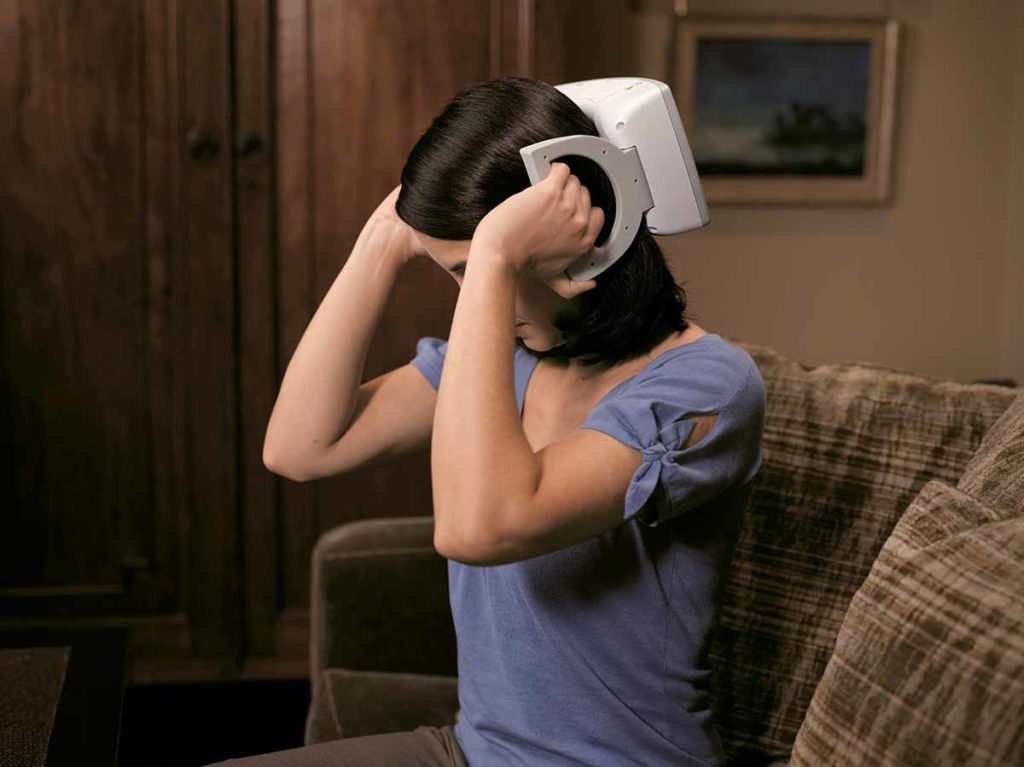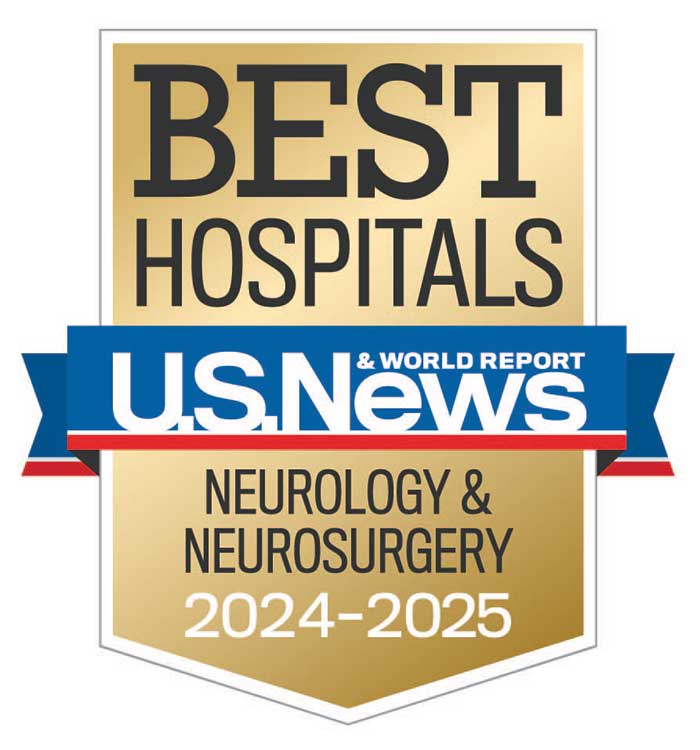Newer Treatment Options Show Promise for Improved and Individualized Migraine Prevention and Treatment
Migraine headaches are among the most common neurological disorders, with an estimated 12 to 23 percent of U.S. adults having had a migraine in the past three months.1 Despite their frequency, migraines are often treated incorrectly, with prevention strategies underutilized and acute therapies used inappropriately.1 Several steps are needed to advance the quality of migraine treatment, says Stephen Ross, MD, vice chair, Penn State Department of Neurology. “It’s important that both clinicians and patients are more aware of what is available, and clinicians understand that other effective treatment options are available to replace medications such as opioids, which have been shown to be problematic.”

Single-pulse transcranial magnetic stimulation, marketed as SpringTMS™, is indicated for PRN acute management of migraine pain. Image courtesy of ENeura®.
Dr. Ross cites two newer, non-invasive options as possible alternatives to medications for patients in whom standard therapy, such as triptans, are contraindicated due to certain comorbidities (e.g., prior heart attack), or who are not able to tolerate many systemic treatments. Transcutaneous supraorbital nerve stimulation, marketed as Cefaly, is indicated for the reduction of migraine frequency, and single-pulse transcranial magnetic stimulation, marketed as SpringTMS™, is indicated for PRN acute management of migraine pain.2 Both treatments have shown positive results in clinical trials.2 To date, neither is approved by insurance, but may be a worthwhile investment for chronic migraine sufferers.
Advances in gene testing may soon combine with more traditional strategies such as detailed patient histories and physical examinations to provide a customized treatment plan. Clinicians could design individualized migraine regimens to include preventive medication, acute medication, non-invasive therapies like Cefaly and SpringTMS, dietary changes, exercise programs, relaxation techniques or a combination.
Headache management may require the input of multiple disciplines. The neurology department at Hershey Medical Center collaborates with other fields such as neurosurgery, spine care, physical medicine and rehabilitation, pain management, physical and occupational therapy, nutrition and psychiatry.
At Penn State Neuroscience Institute, physicians with challenging cases can access the tertiary care headache consultants who can help clarify unusual conditions or comorbid contributors. Neurologists can also offer affirmation of current treatment regimens or new treatment options. Dr. Ross believes this partnership enhances the overall quality of care that migraine patients receive by pinpointing the relevant condition and comorbidities while offering the latest guideline-recommended therapy options.

Stephen C. Ross, MD
Phone: 717-531-1804
Email: sross2@pennstatehealth.psu.edu
Residency: Neurology, University of Maryland Medical System, Baltimore, Md.
Medical School: Wright State University School of Medicine, Dayton, Ohio
Internship: Internal Medicine, Wright State University School of Medicine, Dayton, Ohio
Connect with Stephen C. Ross, MD, on Doximity
References
- Ross S, Wall E, Schierman B, Bailey JM, Cheng E, Flippen II C, et al. Quality improvement in neurology: primary headache quality measures. Neurology. 84; January 13, 2015:200-203.
- Goadsby P. Decade in review—migraine: incredible progress for an era of better migraine care. Nature Reviews Neurology. November 2015, 11;11: 621–622 (2015).

